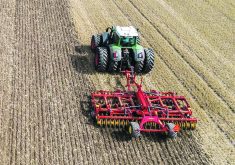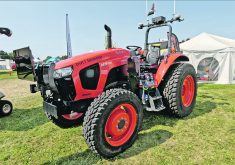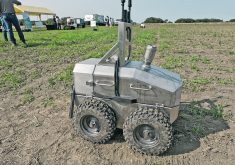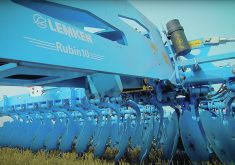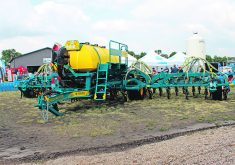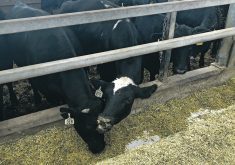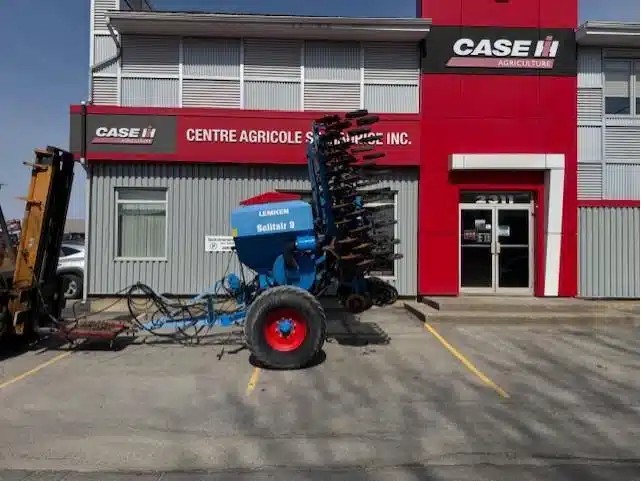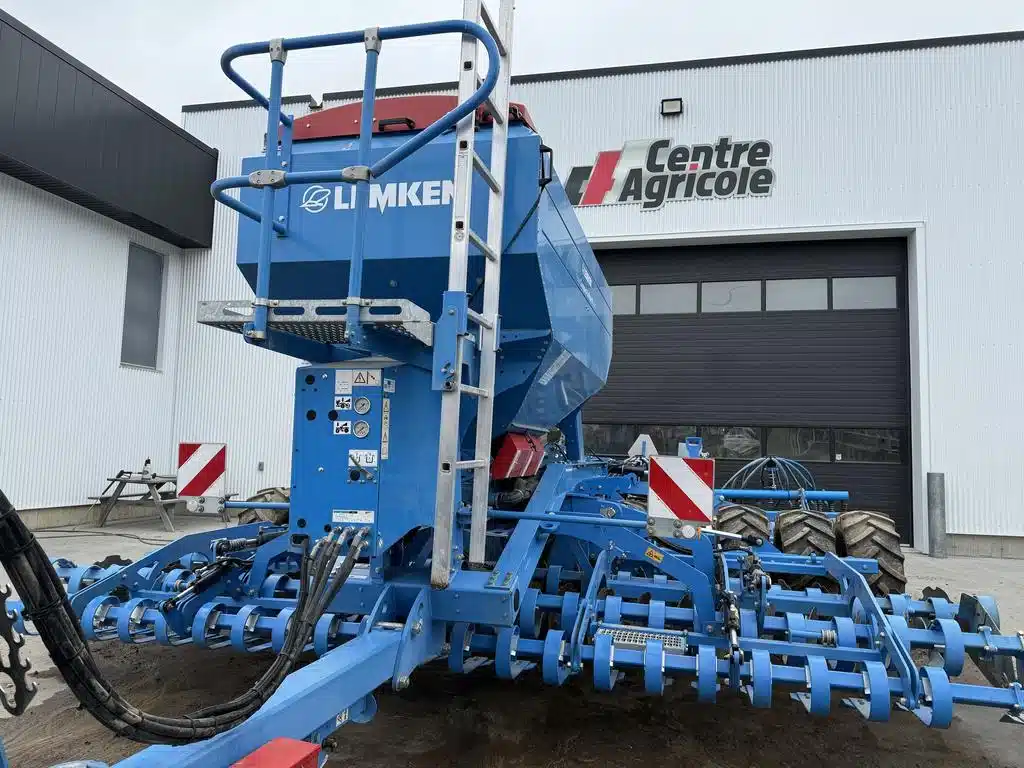Unit wins Environmental Sustainability Award for its combination of seedbed prepping and seeding in one pass
Lemken’s Soilitair DT combination tillage and seeding implement is new to the North American market, and the brand has been showing the machine at different farm shows around Canada this summer to introduce farmers to it.
That includes at Canada’s Outdoor Farm Show in Woodstock, Ont., where it won an environmental sustainability award.
It impressed judges with its ability to provide what they considered to be significant environmental benefits in grain growing operations.
Read Also
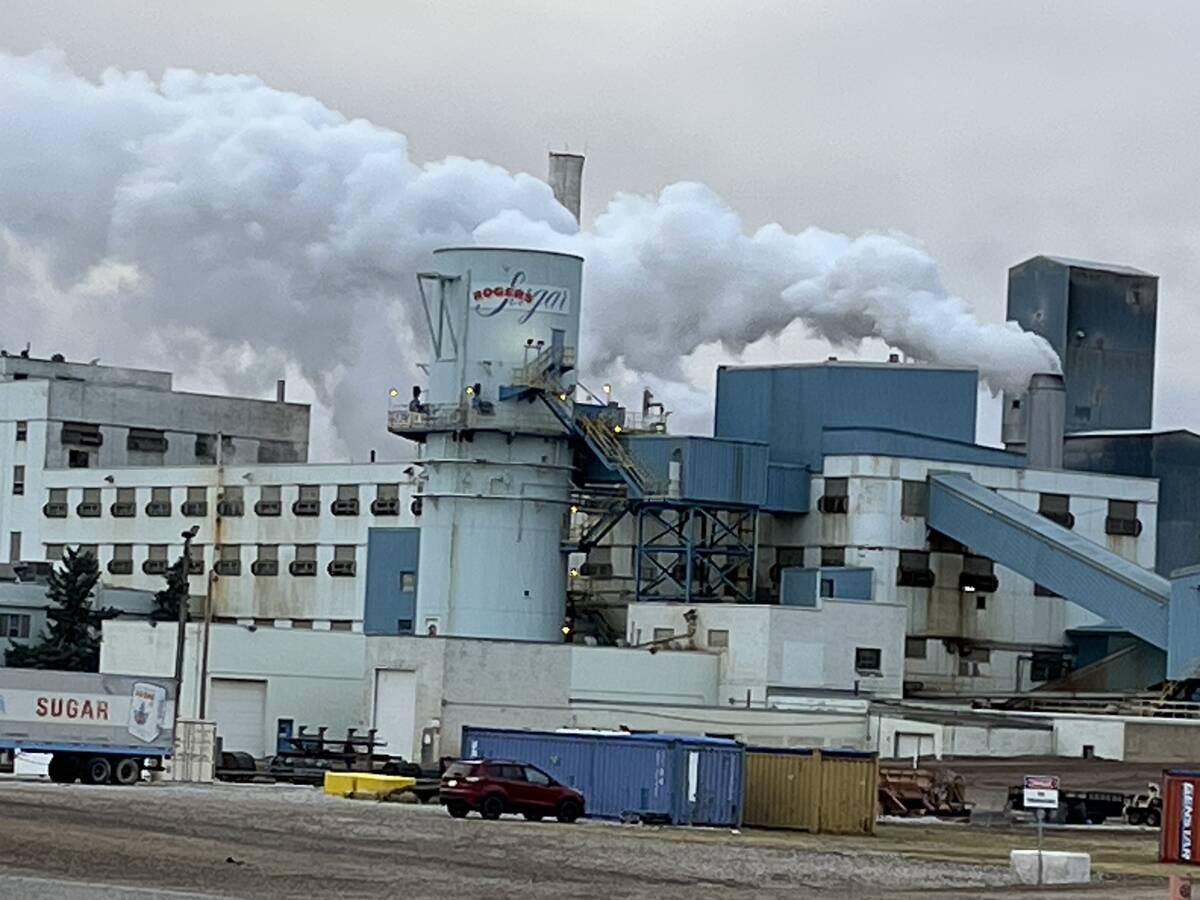
Sugar beet harvest underway in southern Alberta
Alberta Sugar Beet Growers hosts field tour to educate the public on the intricacies of the crop, its harvest process, and contracts with Lantic Sugar
The seeder was also included in the field demonstration portion of the outdoor show, which meant growers could get a look at what benefits it might offer on their farms.
“The Solitair DT is a seedbed prepping seeder,” says Ivor Bernatsky, Lemken’s marketing manager.
“The first thing about Lemken is people think of us as being a tillage manufacturer, but we also make planters and seeders. This machine is a hybrid of tillage and seeding.”
That makes the Solitair DT stand out from much of the seeding equipment on the market today, and it’s somewhat reminiscent of the old Morris Seed Rite, which also combined extensive tillage and seeding into one unit, but with different ground engaging and seed delivery methods.
“We start with discs up front; then we have an option of fertilizer coulters to place fertilizer between each row,” says Matt Amey, a Lemken product specialist.
“Alternatively, you can have it without the fertilizer coulters and have fertilizer mixed in with the seed in every other row or each row. That gives you the option of having a double or single tank.”
There are two sizes of onboard seed tanks: 4,100 litres (116 bushels) for the single tank and 5,100 litres (145 bu.) for the double tank.
Related: Check out the full specifications at AgDealer.com
There are sectional control capabilities with separate meters, and seed is delivered to the openers through an air system.
The Solitair DT combines portions of Lemken’s Heliodor high-speed disc at the front, which is capable of incorporating stubble up to four inches deep. Soil packers that are located behind create a firm seedbed. Seed is then placed into it through double-disc openers.
The openers are mounted on a parallel linkage to allow them to follow uneven contours. There is the option for mechanical down pressure, using a spring that develops 45 kilograms of pressure, or a hydraulic system that can increase that to 75 kg.
“This is what we call our OptiDisc Coulter system,” says Amey.
Including a tillage function during seeding gives growers one more tool to tackle weed resistance mechanically. By doing it in the seeding pass, it avoids losing too much soil moisture.
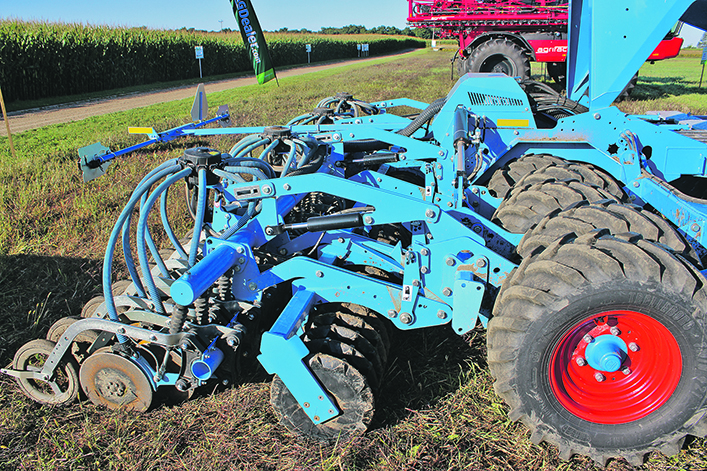
“It will take out ruts,” adds Bernatsky.
“It will take out early emerging seeds as well and create a nice, compact seedbed right before seeding. So, just in time. You can’t tighten the interval between tillage and seeding more than what we’ve done.
“(It) reduces the risk of soil erosion because you’re not doing tillage months before you seed. You’re doing it seconds before seeding. There’s also moisture conservation; we’re compacting the soil after tillage to reduce moisture loss. Killing weeds mechanically gives them (growers) another option outside of herbicides. Finally, by doing everything in a single pass, we’re expecting it will reduce greenhouse gas emissions.”
The Solitair DT is available in four, six and nine metre (13, 20 and 30 foot) working widths. It has its origins in Europe, but Lemken believes the same factors that created a market for it there are in play here in Canada, too.
“We looked at the markets developed in Europe and tried to figure out is there a market (here),” says Bernatsky.
“We look at our responsibility as bringing out innovations and tools that are proven, that farmers can use. They can figure out the agronomy. We just have to make sure they know that the machine is here and can bring those benefits.”




